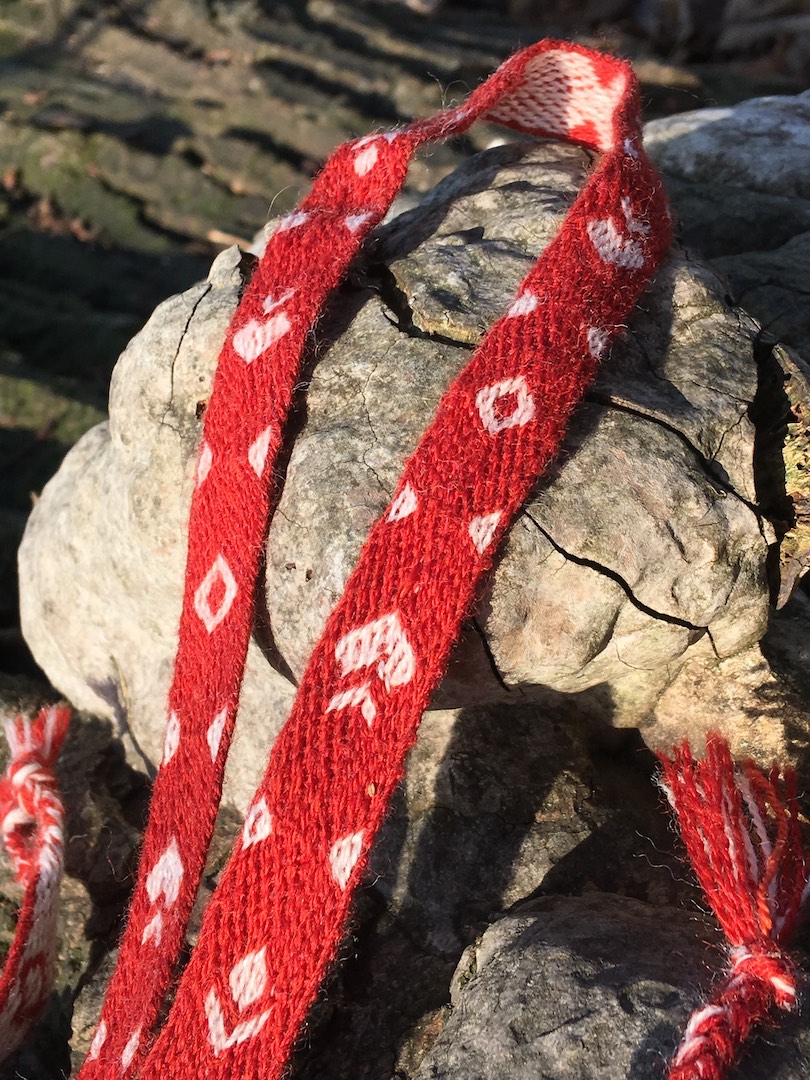Die Borte von einer Kindertunika
aus Achmim (?) 6.-7. Jhd.
 Ob der Ärmel einer Kindertunika, der 1900/1901 von Josef Strzygoski erworben wurde, wirklich aus Achmim kommt, wird nie ganz geklärt werden. Achmim war in der Antike ein bedeutends Zentrum der Textilproduktion und wurde gerne angegeben, um den Verkaufswert zu erhöhen.
Ob der Ärmel einer Kindertunika, der 1900/1901 von Josef Strzygoski erworben wurde, wirklich aus Achmim kommt, wird nie ganz geklärt werden. Achmim war in der Antike ein bedeutends Zentrum der Textilproduktion und wurde gerne angegeben, um den Verkaufswert zu erhöhen.
Aber dass es ein Textil aus dem 6.-7. Jhd. ist und aus Ägypten kommt, wird nicht angezweifelt. Inzwischen befindet sich der Ärmel unter der Ident.Nr. 6913 im Archiv der Skulpturensammlung und Museum für Byzantinische Kunst | Museum für Byzantinische Kunst, Berlin
It is questionable wether the children cloth bought in 1900/1901 by Josef Strzygoski was really evacuated in Achmim. Achmim was in the Antique a important centre of textil production and was declared as origin to increase the market price.
But there is no doubt that the textil is dated in the 6th-7th cenury an has it's origin in Aegypt. Meanwhile it is located in the archive of the 'Museum für Byzantinische Kunst | Museum für Byzantinische Kunst, Berlin

Die brettchengewebte Borte ist als Ärmelabschlus am Handelenk der Tunika angenäht worden. Sie ist aus Wolle und wurde Köpertechnik gewebt.
Insgesamt wurde sie mit 13 Brettchen (alle mit 4 Fäden bezogen), davon 11 Musterbrettchen gewebt. Die Musterbrettchen sind mit 2 weißen und 2 roten Fäden (nebeneinander) aufgezogen
Ich habe bei meiner Arbeit 20/2 Wolle, die von Archäotechnik textile Fläche gefärbt wurde, verwendet. Das Band ist damit 1,2 cm breit geworden. Leider fehlt in dem Artikel die Information, wie breit das Original ist.

The tabelt woven band was sewn at the end of the texile on the wrist. She was made from red and white wool and was woven in 3/1 twill.
It was woven with 13 tablets (each with 4 threads). The 11 pattern tablets are threaded with 2 red and 2 white threads (next to each other).
My work is woven with 20/2 dyed by Archäotechnik textile Fläche. And it is 1,2 cm width. Sadly the width of the original band isn't mentioned in the article.

Literatur: C. Fluck / K. Finneiser, Kindheit am Nil, Berlin 2009, S. 24-25
Technik: Köper
Muster: eigener Entwurf
